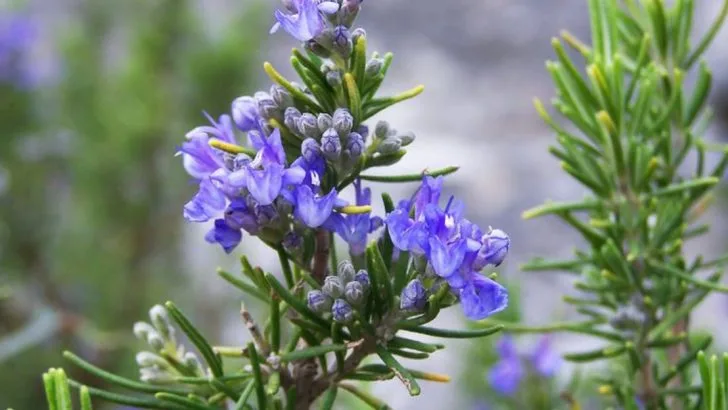Some garden plants are more than just visually appealing—they bring a whole host of benefits that can enhance your outdoor space in unexpected ways. From natural pest control to acting as pollinator magnets, these plants do much more than just beautify your garden.
By incorporating these 26 super useful plants into your landscape, you’ll be able to enjoy practical advantages like enhanced soil health or even medicinal properties. Get ready to create a functional and thriving garden that not only looks great but also works hard for you.
Lavender
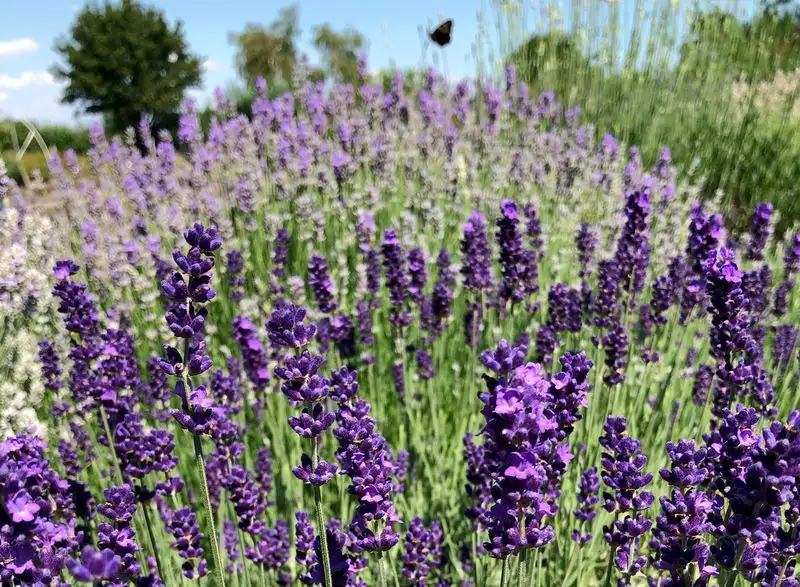
Famous for its calming scent, lavender is more than just a pretty face in the garden. Its aromatic oils are perfect for making homemade sachets, essential oils, or soothing teas. This versatile plant can also repel unwanted insects, making it a gardener’s ally. It thrives in sunny spots and is relatively drought-tolerant, requiring minimal care once established. Harvesting the flowers encourages more blooms, providing continuous beauty and usefulness. Additionally, lavender attracts pollinators like bees, which can enhance the overall health of your garden. Its presence is both practical and delightful.
Rosemary
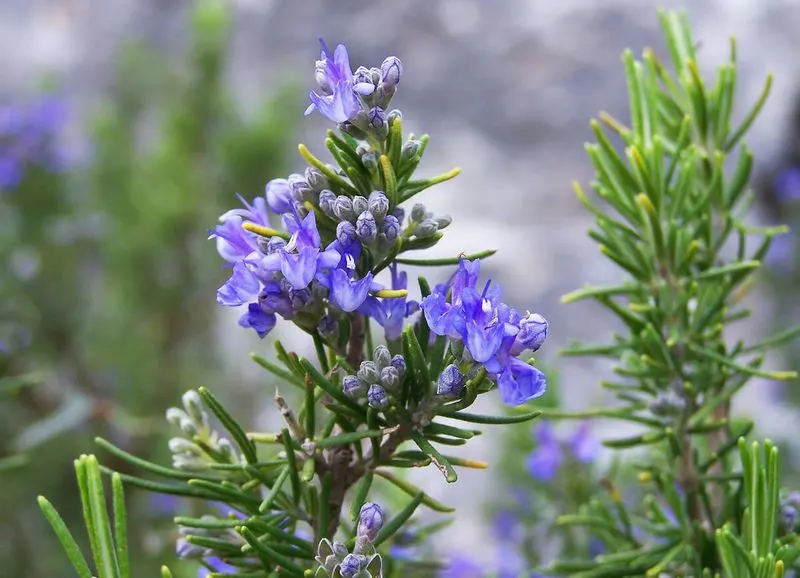
Beyond flavoring your favorite dishes, rosemary offers so much more. This robust herb thrives in well-drained soil and plenty of sunlight, making it a hardy addition to any garden. It’s known to improve memory and concentration, often used in aromatherapy for its cognitive benefits. Rosemary can also be used to create a natural insect repellent, keeping pesky bugs at bay. Its evergreen nature ensures your garden remains lively year-round, with minimal maintenance required. The aromatic oils can be infused into oils or used directly from the plant for cooking and health purposes.
Thyme
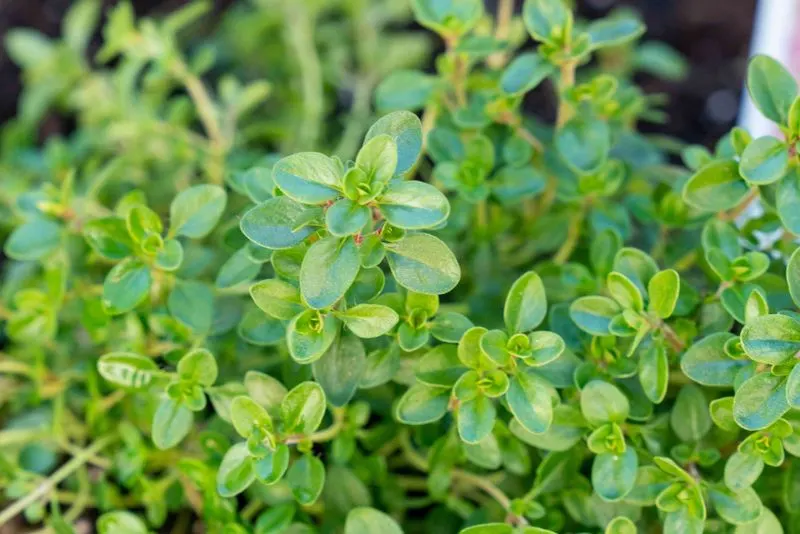
Thyme isn’t just for culinary delights; it’s a powerhouse of medicinal properties. Known for its antibacterial and antiseptic qualities, it can be used in natural cleaning products or home remedies. This hardy herb prefers full sun and well-drained soil, making it an easy-to-grow option for any gardener. Its small, aromatic leaves and delicate flowers attract beneficial insects, promoting a healthy ecosystem. Thyme can be harvested for fresh use or dried for later, ensuring its benefits are available year-round. Its versatility and ease of growth make it a must-have in any garden.
Mint

Known for its refreshing flavor, mint is a gardener’s friend with multiple uses. It grows vigorously, often taking over garden spaces, so it’s best contained in pots. Mint is excellent for making tea, flavoring dishes, or freshening the home with its scent. Its rapid growth can be a boon, providing plenty for culinary and medicinal uses. Mint’s essential oils are great for soothing muscle aches and aiding digestion. This plant also attracts beneficial insects, making it an integral part of a garden’s ecosystem. With minimal care, mint thrives and serves numerous purposes.
Basil
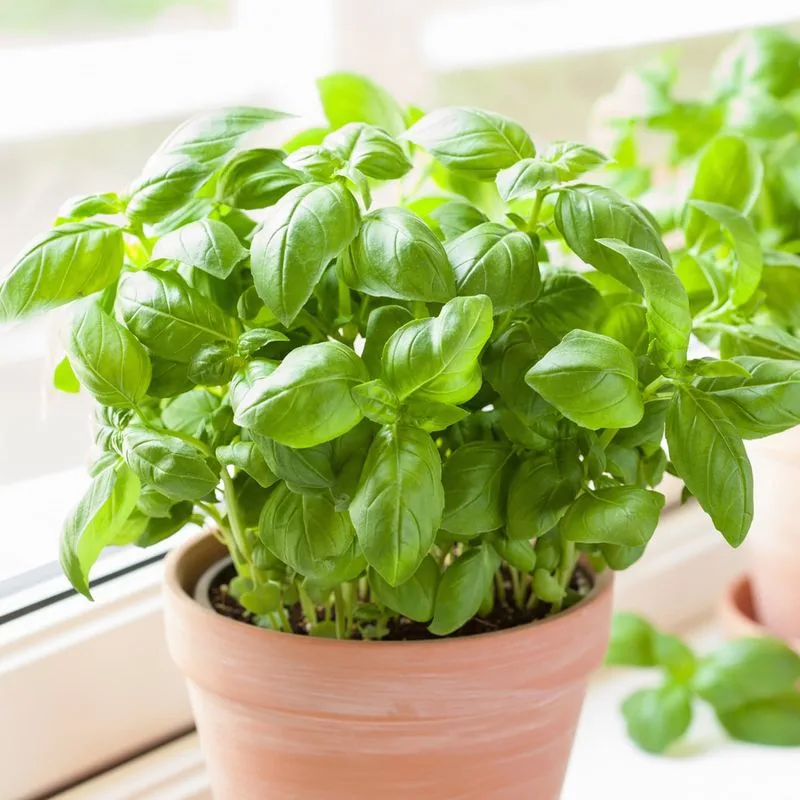
Basil is a culinary staple, but its uses extend beyond the kitchen. This aromatic herb thrives in warm, sunny conditions and well-drained soil. Beyond its delicious flavor, basil has anti-inflammatory properties, beneficial for reducing swelling and pain. It’s also known to repel mosquitoes, providing a natural pest control solution. Basil is easy to grow and continuously produces leaves when regularly harvested. It’s a versatile herb that can be used fresh, dried, or frozen, ensuring availability throughout the year. Its beauty and utility make it a favorite among gardeners.
Sage
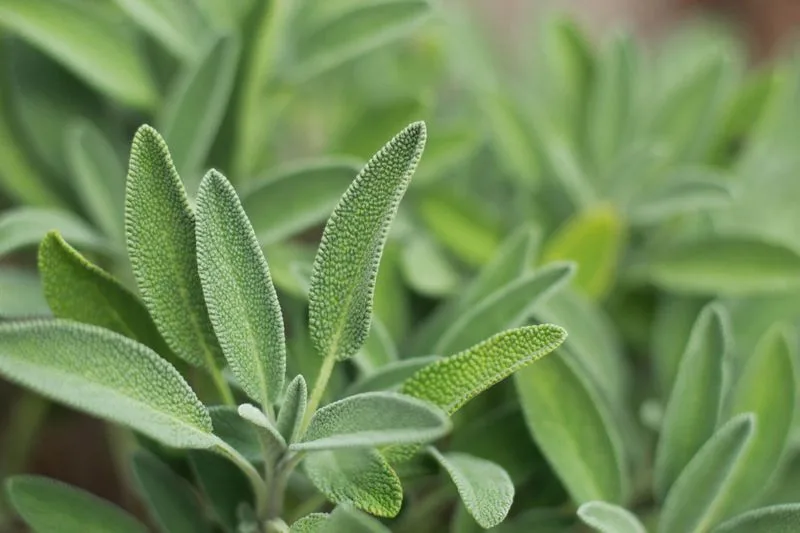
Sage is not just for Thanksgiving stuffing; it serves a multitude of purposes. This perennial herb thrives in sunny spots with well-drained soil. Sage has medicinal properties, including anti-inflammatory and antioxidant benefits, making it useful in natural remedies. It also acts as a natural insect repellent, helping to keep your garden pest-free. Sage is drought-resistant, requiring little water once established, making it an eco-friendly choice. Its grey-green leaves add a unique texture to any garden, blending aesthetics with functionality. Harvesting its leaves regularly encourages fresh growth and continuous utility.
Aloe Vera
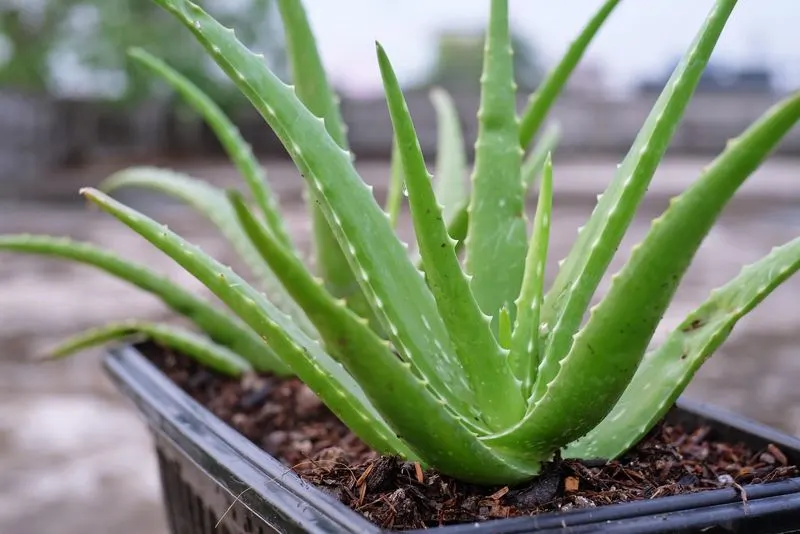
Aloe vera is renowned for its healing properties, especially for skin ailments. Its thick, fleshy leaves contain a gel that soothes burns, cuts, and insect bites. This succulent plant thrives in sunny, dry conditions and requires minimal watering, making it easy to care for. Aloe vera can be grown indoors or outdoors, offering versatility in placement. In addition to its medicinal uses, it can improve air quality, absorbing toxins and releasing oxygen. A plant with both health benefits and low maintenance needs, aloe vera is a valuable addition to any garden.
Chamomile
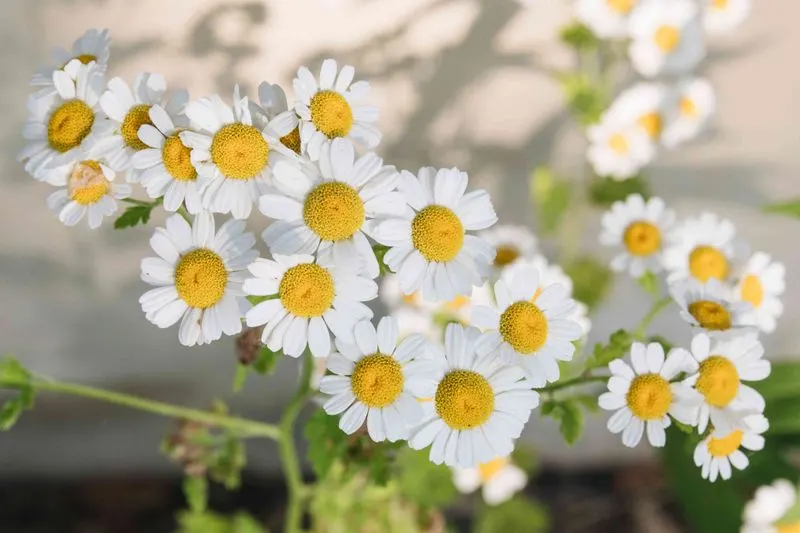
These dainty flowers are more than just visually appealing—they offer calming properties perfect for teas and tinctures. Chamomile thrives in sunny, well-drained environments and can even tolerate poor soil conditions. It’s known for its ability to soothe the mind and body, often used to aid sleep and digestion. The flowers can be harvested and dried for year-round use in a variety of herbal remedies. Chamomile also attracts beneficial insects, promoting a healthy garden ecosystem. Easy to grow and maintain, it’s a delightful addition to any gardener’s collection.
Echinacea
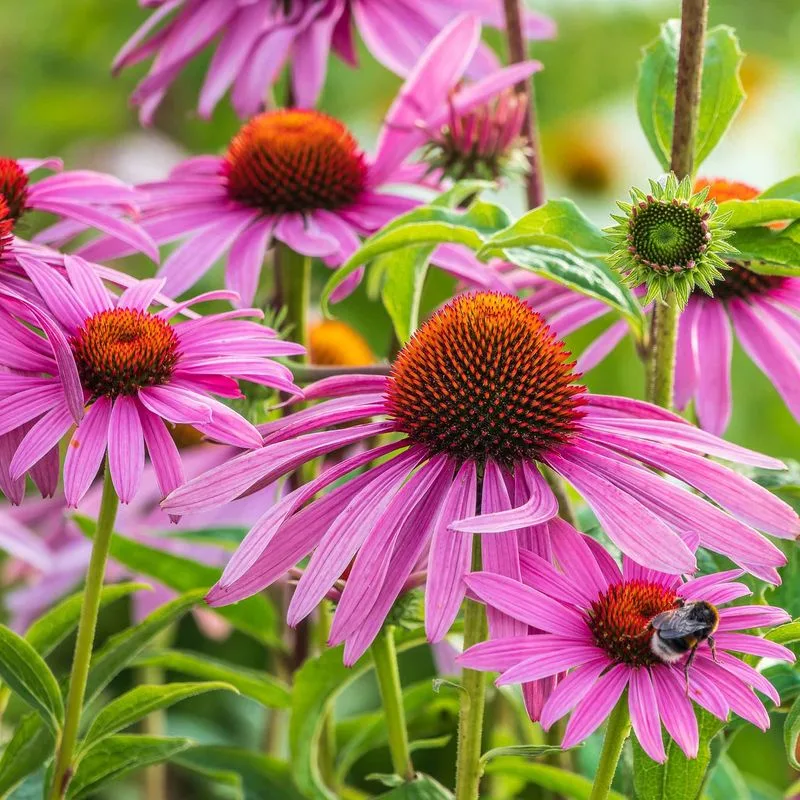
Echinacea is well-known for its immune-boosting properties, making it a staple in natural medicine. It thrives in sunny spots with well-drained soil and is relatively drought-tolerant. The vibrant flowers attract pollinators like bees and butterflies, enhancing the biodiversity of your garden. Echinacea can be used in teas, tinctures, and supplements to support overall health. Its striking appearance adds visual interest to garden beds, while its medicinal qualities provide practical benefits. With its dual role as a beauty and health ally, echinacea is a smart choice for gardeners of all levels.
Lemon Balm
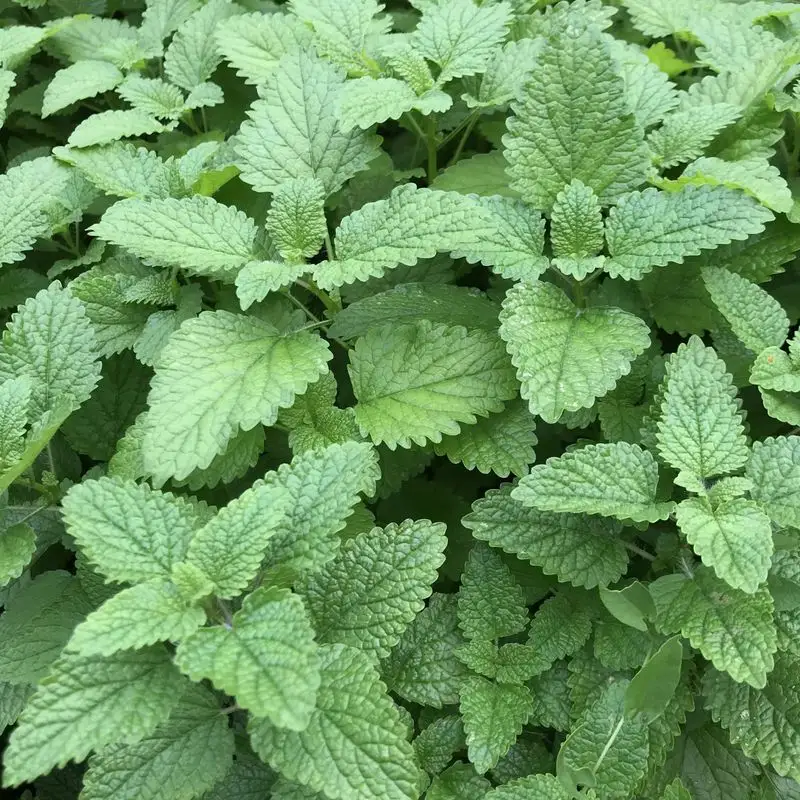
Lemon balm is a fragrant herb with a multitude of uses, both culinary and medicinal. Known for its calming effects, it’s often used in teas to reduce stress and anxiety. This herb prefers sunny locations and well-drained soil, growing vigorously with minimal care. Lemon balm also acts as a natural mosquito repellent, making it a valuable addition to outdoor spaces. Its leaves can be used fresh or dried for a variety of purposes, from flavoring dishes to crafting homemade beauty products. Its versatility and ease of growth make it a garden favorite.
Calendula
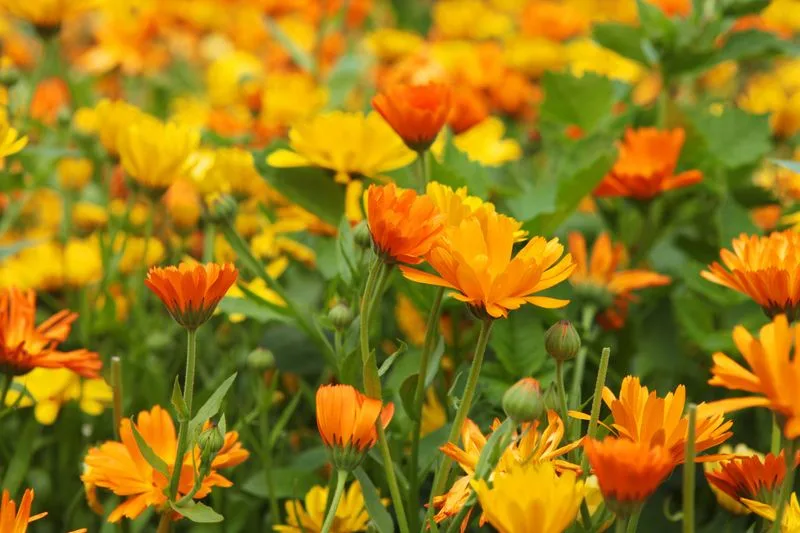
Often referred to as “pot marigold,” calendula offers more than just cheerful blooms. It thrives in sunny locations and well-drained soil, blooming profusely throughout the growing season. Calendula has skin-healing properties and is used in creams and balms for its anti-inflammatory effects. The flowers are edible, adding a pop of color and flavor to salads and dishes. Calendula attracts beneficial insects, promoting a healthy garden ecosystem. Its vibrant appearance coupled with its medicinal uses make it a multifunctional plant worth cultivating. Harvesting regularly encourages continuous blooming and utility.
Nasturtium
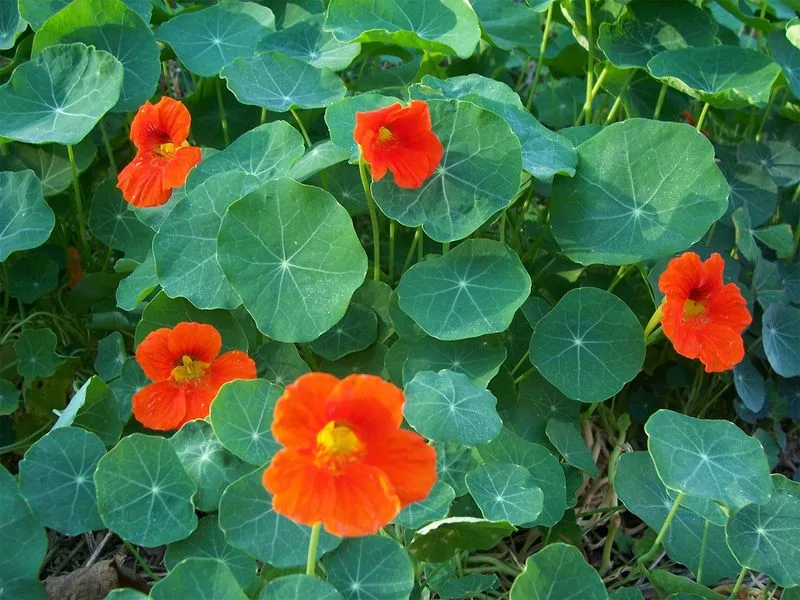
Nasturtiums are not just a visual delight; their leaves and flowers offer culinary intrigue with a peppery flavor. They thrive in poor soil and full sun, requiring little care once established. Nasturtiums can be used in salads or as garnishes, bringing both color and taste to dishes. They also serve as companion plants, repelling pests while attracting beneficial insects. This dual-purpose plant is easy to grow and maintain, making it perfect for gardeners seeking low-maintenance options. Their cheerful blooms and practical uses make them a valuable addition to garden spaces.
Marigold
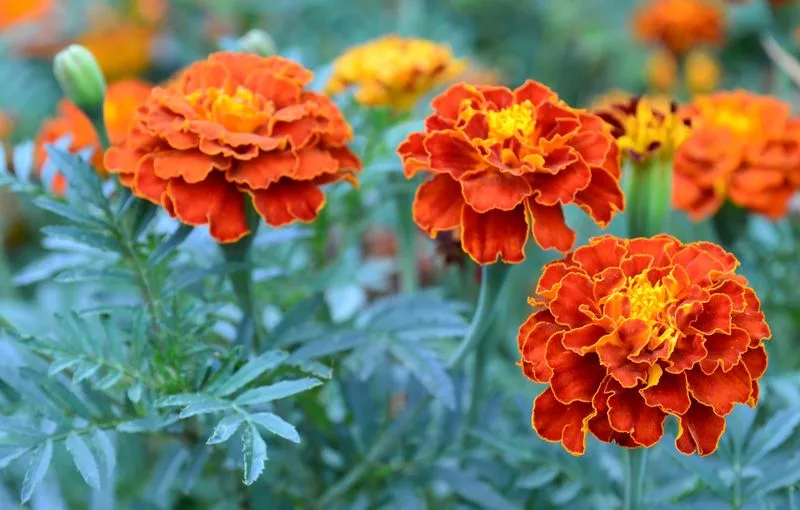
Known for their vibrant colors, marigolds are more than just decorative. These flowers are excellent at repelling pests, serving as a natural deterrent for many garden insects. Marigolds thrive in sunny locations and well-drained soil, offering low-maintenance beauty throughout the growing season. Their pungent aroma is both a pest repellent and a delight to the senses. Beyond their pest-control properties, marigold petals are edible and can be used to add color to salads. The cheerful blooms and multifunctional nature make marigolds a staple in any garden.
Borage
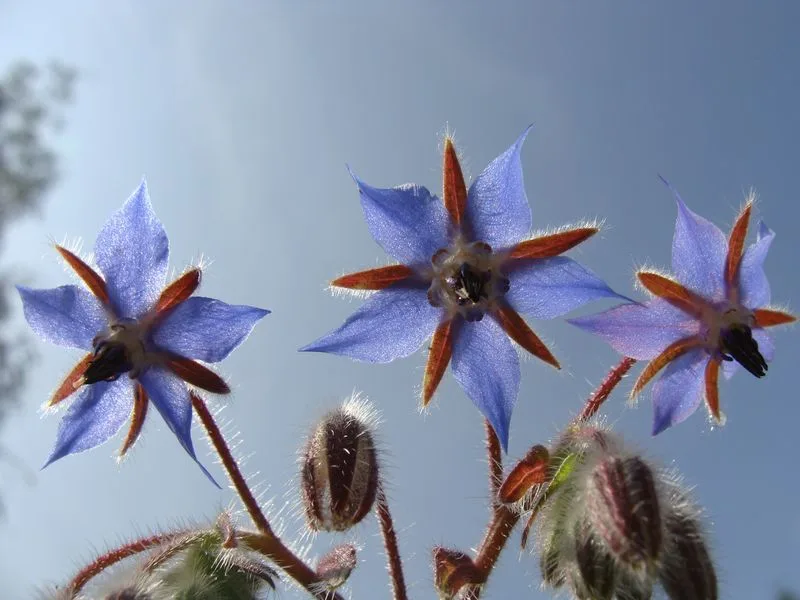
Borage is a star-shaped beauty with more to offer than meets the eye. This hardy plant attracts pollinators, enhancing the health and productivity of your garden. It thrives in sunny spots and can tolerate a variety of soil conditions, making it easy to grow. Borage leaves and flowers are edible, with a cucumber-like flavor that can be used in salads and drinks. The plant is also known for its medicinal properties, often used to support adrenal health and reduce inflammation. Its vibrant flowers and beneficial uses make it a garden favorite.
Sunflower
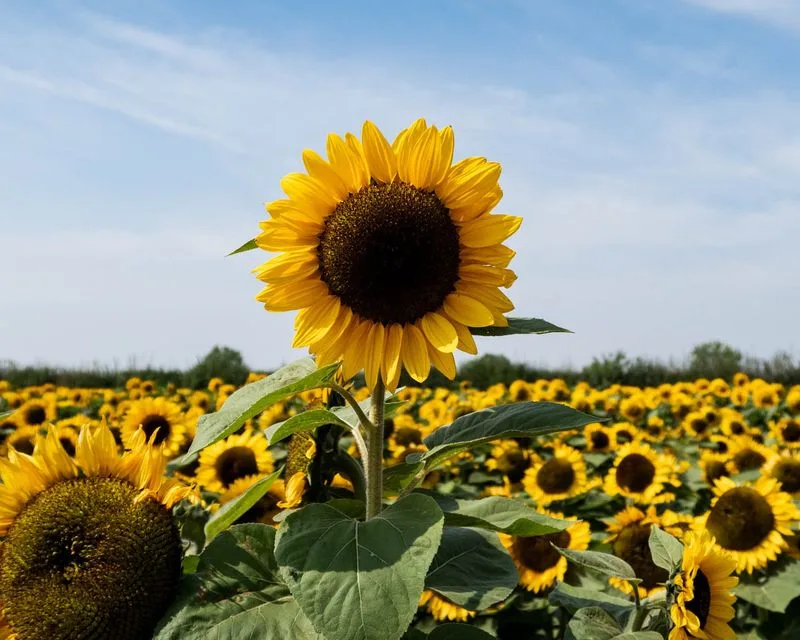
Sunflowers are iconic garden plants that offer more than just visual appeal. These towering beauties provide seeds rich in nutrients, perfect for snacking or adding to dishes. Sunflowers thrive in sunny locations with well-drained soil, requiring minimal care once established. They attract birds and pollinators, supporting local wildlife. The seeds can be harvested and roasted for a healthy snack, while the flowers add a cheerful presence to any garden. Their towering stature and multifunctional nature make sunflowers a standout addition to any outdoor space.
Fennel
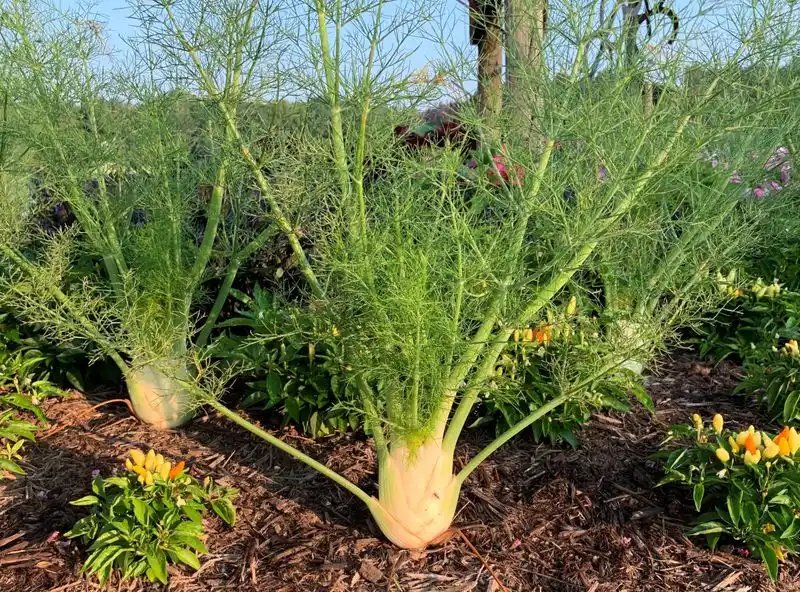
Fennel is more than just a flavorful herb; it’s a garden powerhouse with multiple uses. Thriving in sunny locations and well-drained soil, fennel offers culinary delights with its anise-flavored leaves and bulbs. It’s also known for aiding digestion and can be used in teas or as a seasoning. Fennel attracts beneficial insects, enhancing the ecological balance of your garden. Its tall, feathery fronds add a unique texture to garden beds, blending function with aesthetics. Whether used in cooking or for its health benefits, fennel is a versatile addition to any garden.
Parsley
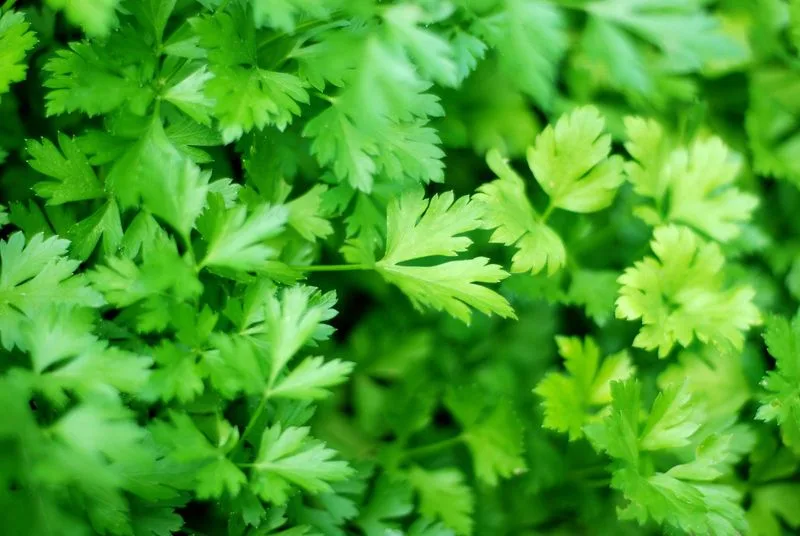
Often relegated as a garnish, parsley brings more to the table than expected. This biennial herb thrives in sunny or partially shaded spots with well-drained soil. Parsley is rich in vitamins A, C, and K, offering nutritional benefits when added to dishes. It also supports bone health and improves digestion, making it more than just a decorative touch. Parsley can be used fresh or dried, ensuring its benefits are available year-round. Its lush, green appearance adds vibrancy to garden beds, and its ease of growth makes it a gardener’s favorite.
Chives
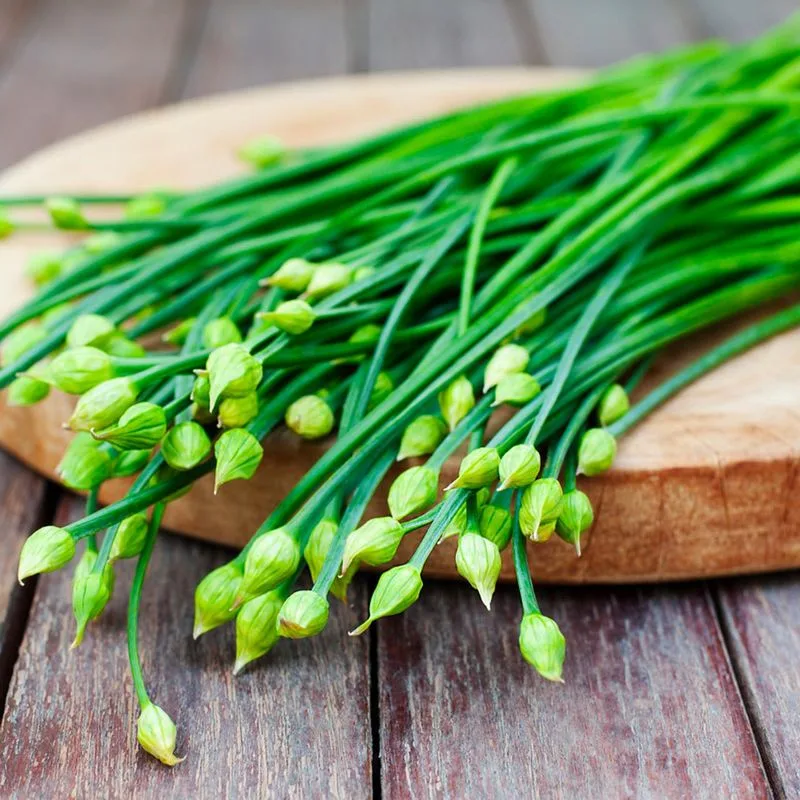
Chives are a kitchen staple that doubles as a garden gem. Thriving in sunny spots with well-drained soil, these perennials offer mild onion flavoring to dishes. Chives are not only culinary stars but also attract beneficial insects, promoting a healthy garden ecosystem. Their purple flowers add a splash of color to garden beds, enhancing visual appeal. Chives are easy to grow and require minimal maintenance, making them perfect for beginner gardeners. Harvesting regularly encourages growth, ensuring a continuous supply of fresh flavor and beauty throughout the growing season.
Oregano
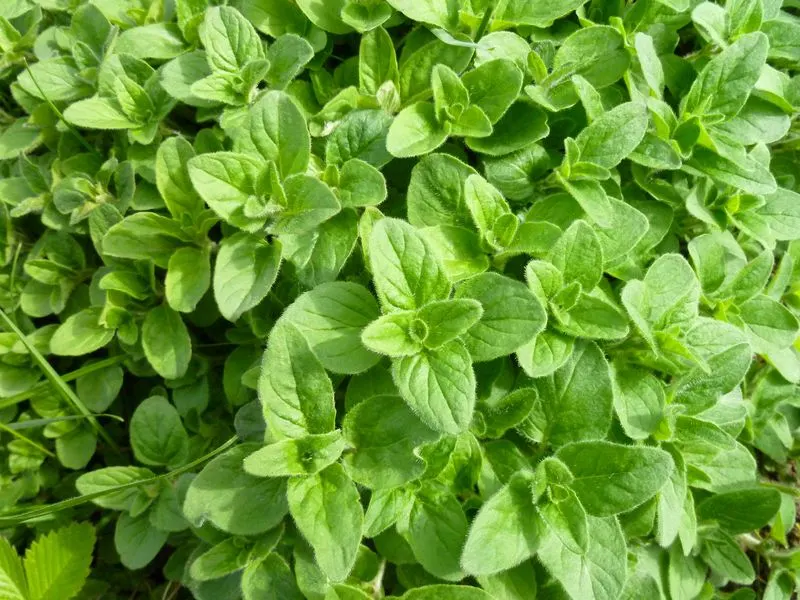
Oregano is a versatile herb known for its robust flavor and health benefits. Thriving in sunny locations with well-drained soil, it’s an essential in Mediterranean cuisine. Oregano has antibacterial and antioxidant properties, making it a valuable addition to natural remedies. It can be used fresh or dried, offering flexibility in culinary and health applications. Oregano attracts beneficial insects, supporting biodiversity in your garden. Its ease of growth and maintenance makes it a favorite for gardeners of all skill levels. This herb provides both functional and flavorful benefits, enhancing any garden space.
Dill
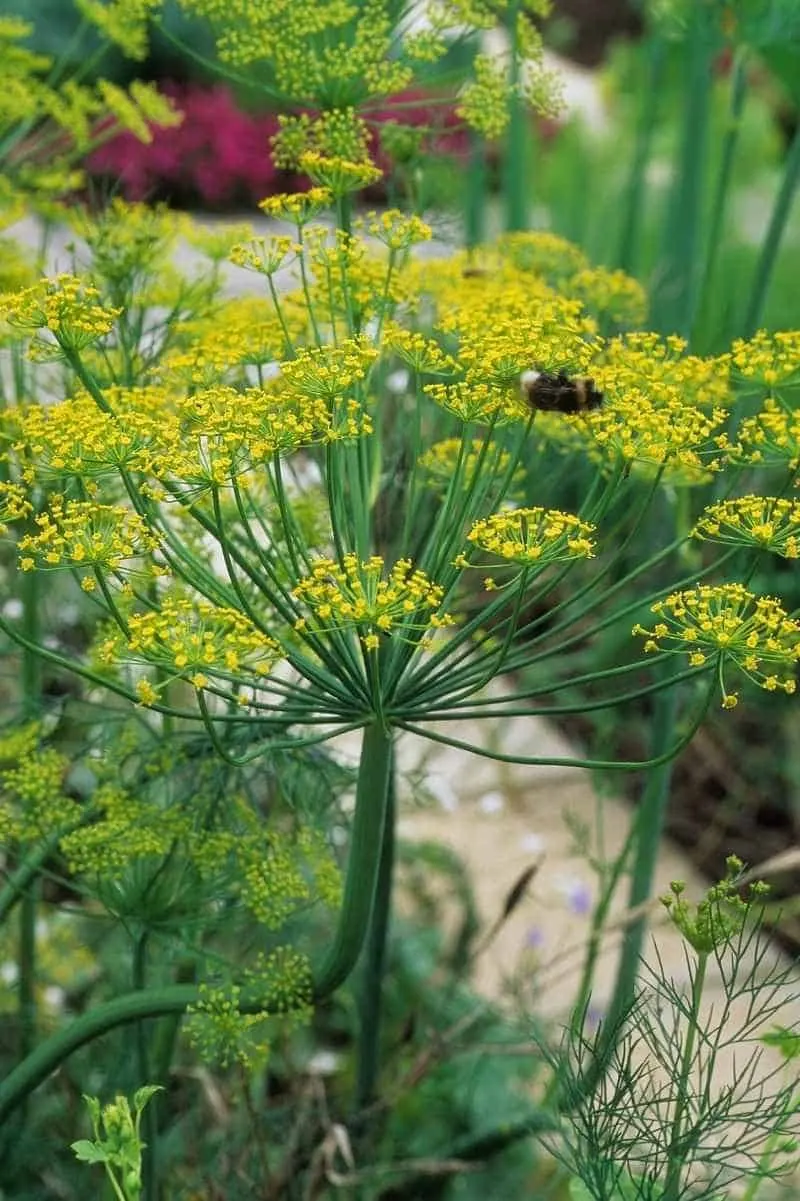
Dill is more than just a pickle partner; it’s a multifaceted herb with culinary and medicinal uses. Thriving in sunny spots with well-drained soil, dill adds flavor to a variety of dishes. It’s known for its digestive benefits, often used in teas and remedies to soothe stomach discomfort. Dill attracts beneficial insects, promoting a balanced ecosystem in your garden. Its feathery foliage and fragrant flowers add visual and aromatic appeal to garden beds. Easy to grow and harvest, dill offers year-round utility, making it a practical and delightful addition to any garden.
Cilantro

Cilantro is a culinary staple with far-reaching benefits. Thriving in sunny or partially shaded spots with well-drained soil, it offers a burst of flavor to many dishes. Cilantro is rich in antioxidants and can help with detoxification, supporting overall health. The leaves can be used fresh, while the seeds (coriander) are perfect for seasoning. Cilantro attracts beneficial insects and promotes biodiversity within your garden. Its fast growth and versatility make it a must-have for any gardener seeking both flavor and function. Regular harvesting ensures a continual supply of fresh leaves.
Lemongrass
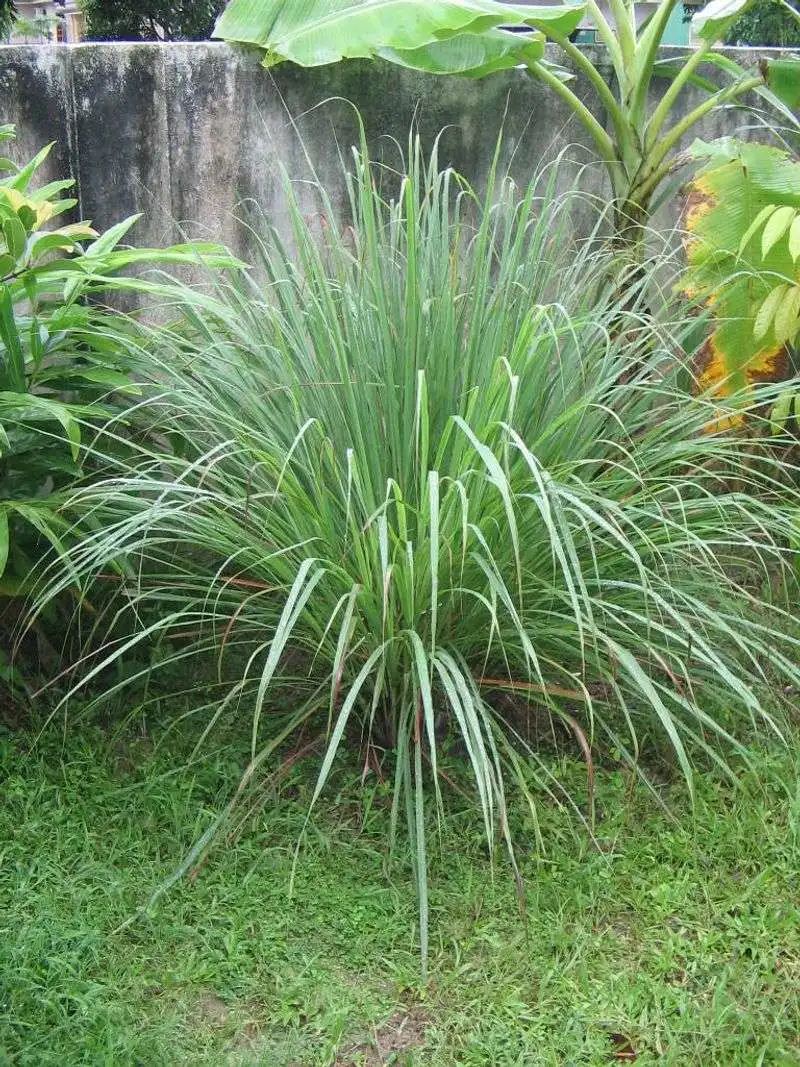
Lemongrass offers more than just its refreshing citrus flavor; it’s a powerhouse of health benefits. Thriving in sunny, well-drained locations, this tropical plant supports digestion and has antibacterial properties. It’s often used in teas, soups, and natural remedies. Lemongrass also acts as a natural mosquito repellent, enhancing outdoor enjoyment without pests. Its tall, graceful stalks add visual interest to garden beds, blending beauty with practicality. Easy to grow and maintain, lemongrass provides continuous benefits throughout the growing season. Its versatility and health properties make it a standout addition to gardens.
Peppermint
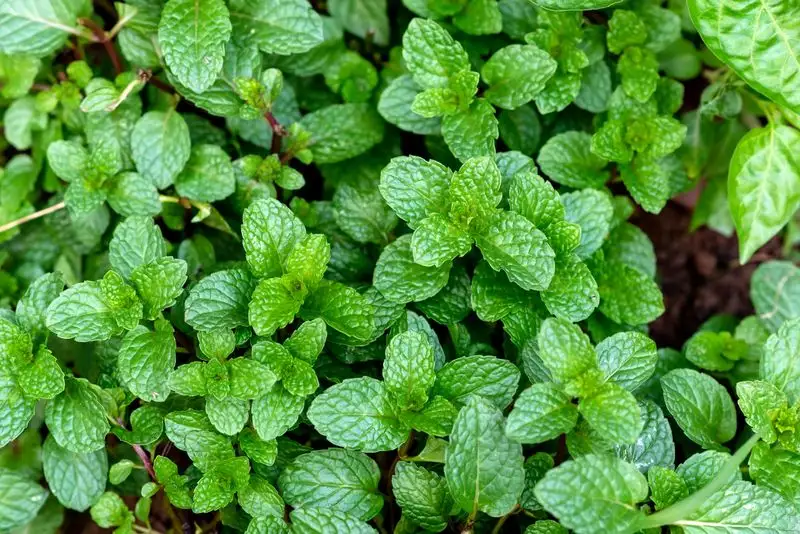
Peppermint is a fragrant herb with a multitude of uses, both culinary and medicinal. Known for aiding digestion and relieving headaches, it’s a practical addition to any garden. Peppermint thrives in sunny or partially shaded spots and needs well-drained soil. It can become invasive, so it’s best grown in containers to keep it in check. The leaves can be used fresh or dried, adding flavor to teas, desserts, and more. Peppermint also attracts beneficial insects, promoting a healthy garden ecosystem. Its refreshing scent and practical uses make it a gardener’s favorite.
Yarrow
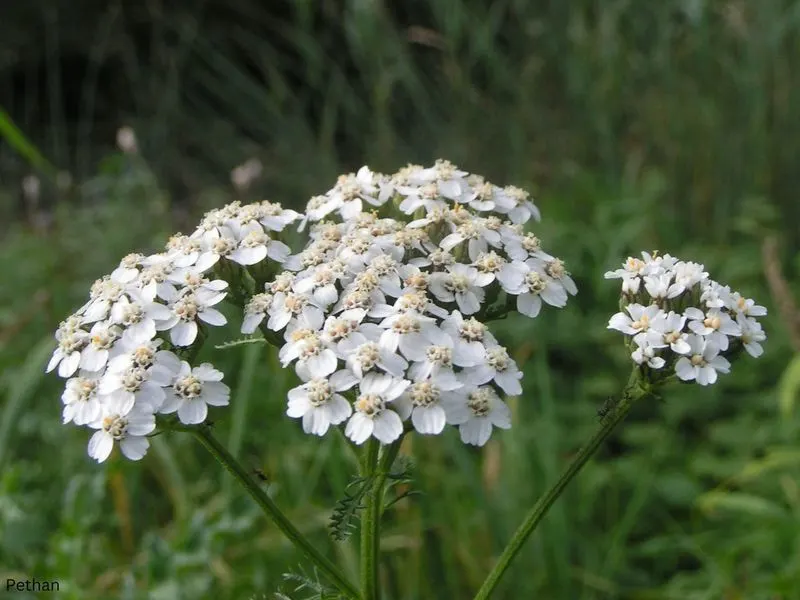
Yarrow is a hardy perennial with more than just visual appeal. Thriving in sunny locations with well-drained soil, it offers medicinal benefits, including anti-inflammatory and wound-healing properties. Yarrow attracts beneficial insects, promoting biodiversity and a healthy garden ecosystem. Its feathery foliage and clusters of small flowers add texture and beauty to garden spaces. Yarrow is drought-resistant, making it an eco-friendly choice for water-conscious gardeners. This plant’s diverse uses in natural remedies and its ability to enhance garden health make it a valuable addition to any landscape. With minimal care, it thrives and serves multiple purposes.
Tarragon
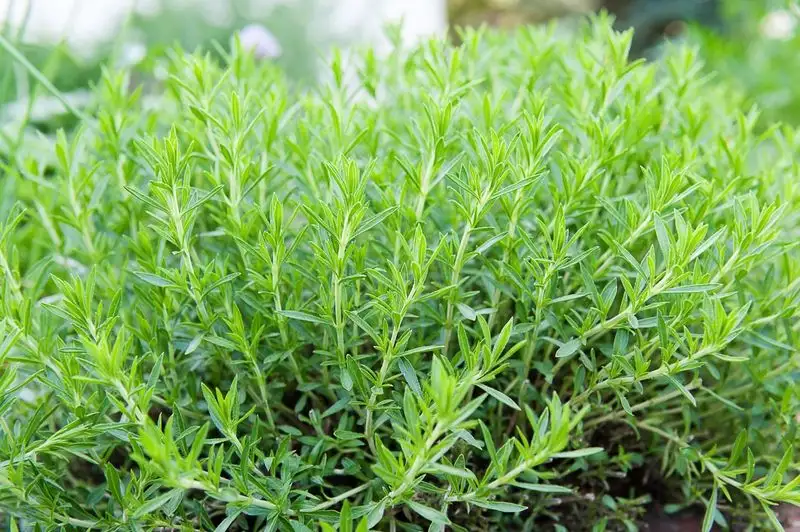
Tarragon is more than just a culinary marvel; it’s a gardener’s delight with multiple benefits. Thriving in sunny, well-drained locations, tarragon adds a unique flavor to dishes with its anise-like taste. It also offers digestive benefits, often used in herbal remedies and teas. Tarragon attracts beneficial insects, supporting a balanced ecosystem in your garden. Its slender leaves and subtle fragrance add elegance to garden beds, blending aesthetics with utility. Easy to grow and maintain, tarragon provides continuous benefits through the growing season. Its culinary and health properties make it a versatile and cherished garden plant.
Ghost Peppers
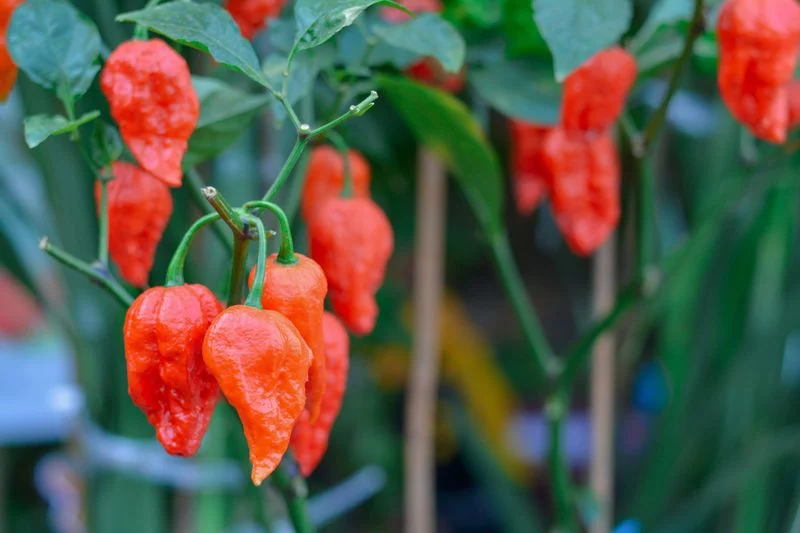
Ghost Peppers, known for their fiery heat, are not just for culinary thrill-seekers. These vibrant red peppers can deter garden pests naturally. The capsaicin content, responsible for their heat, acts as a natural pest repellent. Plant them around your vegetable patch to keep unwanted bugs at bay.
In addition to their pest-repelling properties, ghost peppers can be used to make spicy homemade sauces. They are perfect for those who enjoy adding a little adventure to their meals.
Remember, handling these peppers requires caution due to their intense heat, so always wear gloves while harvesting.

